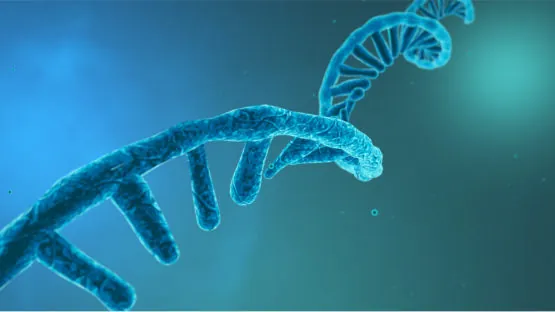A massive RNA sequencing effort has identified changes in microRNA associated with Parkinson’s. Some of the changes correlated with disease progression, holding out hope that they could be useful as prognostic or diagnostic biomarkers to help guide research and evaluate potential therapies.
Pinning down Parkinson’s
Although Parkinson’s disease is the second most common neurodegenerative disease globally, researchers lack some of the key tools to understand and address the condition. Parkinson’s varies extensively in its pathophysiology and clinical features, making it hard to evaluate therapeutic outcomes in clinical trials. Disease progression can also vary considerably, and the interplay of genetic and environmental factors driving this remains poorly understood. The inability to properly track Parkinson’s has hampered the development of an effective therapy.
Biomarkers could alleviate this problem. Sufficiently reliable, precise biomarkers would make it possible for researchers to select a homogeneous population for a study. They would also provide objective endpoints against which to evaluate therapeutic interventions as well as a way to measure disease progression.
MicroRNAs are a promising pool of candidate biomarkers for conditions like Parkinson’s. These are a class of small, noncoding RNAs that influence gene activity by regulating messenger RNAs transcribed from genes. While high-throughput sequencing has led to genomic and transcriptomic investigations of Parkinson’s, to date, there has been less research on the role of small noncoding RNAs such as microRNAs.
Large cohort, deep sequencing
This new study describes how an international team has used RNA sequencing of samples from a large cohort to identify microRNAs that could serve as Parkinson’s biomarkers. They were able to draw on the Parkinson’s Progression Markers Initiative (PPMI), a public-private partnership launch by the Michael J Fox Foundation in 2010 with the goal of identifying specific progression markers for Parkinson’s. PPMI includes participants at clinical sites spread across 11 countries. Together comprehensive clinical phenotyping coupled with outpatient follow-up of more than 10 years, this makes it an extremely valuable resource for understanding and investigating the variability and progression of Parkinson’s.
The team analyzed RNA sequences from thousands of patients with different types of Parkinson’s. They included the initial samples as well as follow-up time points so they could study disease progression. While their sequencing uncovered many kinds of small noncoding RNAs, they chose to focus the analysis on microRNAs. They also verified their findings with data from an independent cohort.
The analysis uncovered a set of microRNAs that are dysregulated in Parkinson’s patients. The dysregulation occurred in two waves, one in patients in their 30s and another in their 70s. This is extremely useful, since it bolsters the idea that the molecular underpinnings of early-onset and late Parkinson’s are different. With the identity of some of the molecular actors in hand, researchers can try to tease apart the different etiologies.
The team also identified changes in microRNA that correlated with disease progression, differing between patients in whom the disease progressed quickly and those in whom it remained relatively stable. They were also able to distinguish between different types of Parkinson’s disease.
Finally, the researchers mapped these microRNA changes to networks of messenger RNA in order to get an idea of the resulting changes in gene activity and discover which processes were affected. For example, they report that mitochondrial dysfunction seems to be important, though it remains unclear whether this is a causeudisluteo or consequence of the disease, and their findings also implicate changes in the inflammatory response.
Noncoding RNAs have diagnostic and prognostic importance in Parkinson’s disease (PD). We studied circulating small noncoding RNAs (sncRNAs) in two large-scale longitudinal PD cohorts (Parkinson’s Progression Markers Initiative (PPMI) and Luxembourg Parkinson’s Study (NCER-PD)) and modeled their impact on the transcriptome. Sequencing of sncRNAs in 5,450 blood samples of 1,614 individuals in PPMI yielded 323 billion reads, most of which mapped to microRNAs but covered also other RNA classes such as piwi-interacting RNAs, ribosomal RNAs and small nucleolar RNAs. Dysregulated microRNAs associated with disease and disease progression occur in two distinct waves in the third and seventh decade of life. Originating predominantly from immune cells, they resemble a systemic inflammation response and mitochondrial dysfunction, two hallmarks of PD. Profiling 1,553 samples from 1,024 individuals in the NCER-PD cohort validated biomarkers and main findings by an independent technology. Finally, network analysis of sncRNA and transcriptome sequencing from PPMI identified regulatory modules emerging in patients with progressing PD.
Conclusion
Taken as a whole, this study provides a systemic overview of the changes in microRNA in different types of Parkinson’s and at different time points. This molecular data will be an invaluable resource in guiding future research on the disease, whether to understand its biology or to develop potential therapies. While further research will be needed to determine if the microRNA changes meet the criteria to be used a biomarkers – for example, determining their specificity to Parkinson’s – this work is a first step in that direction.




